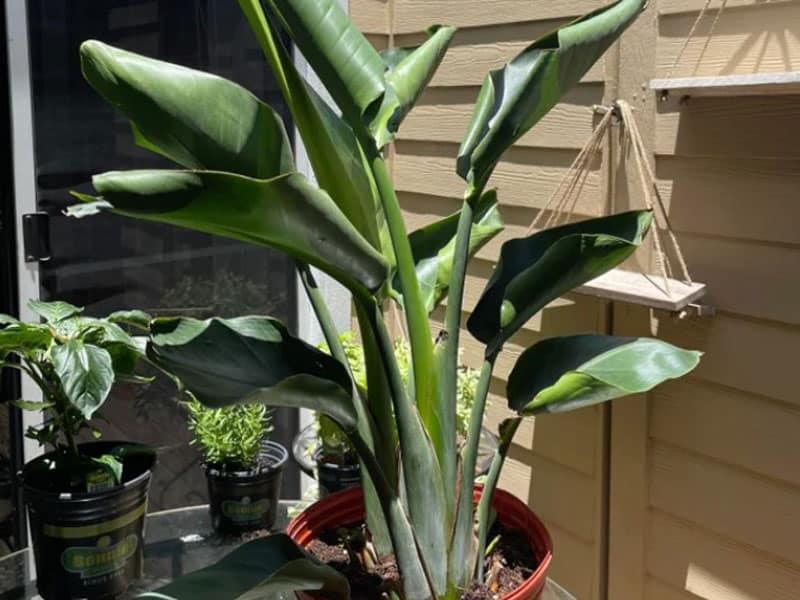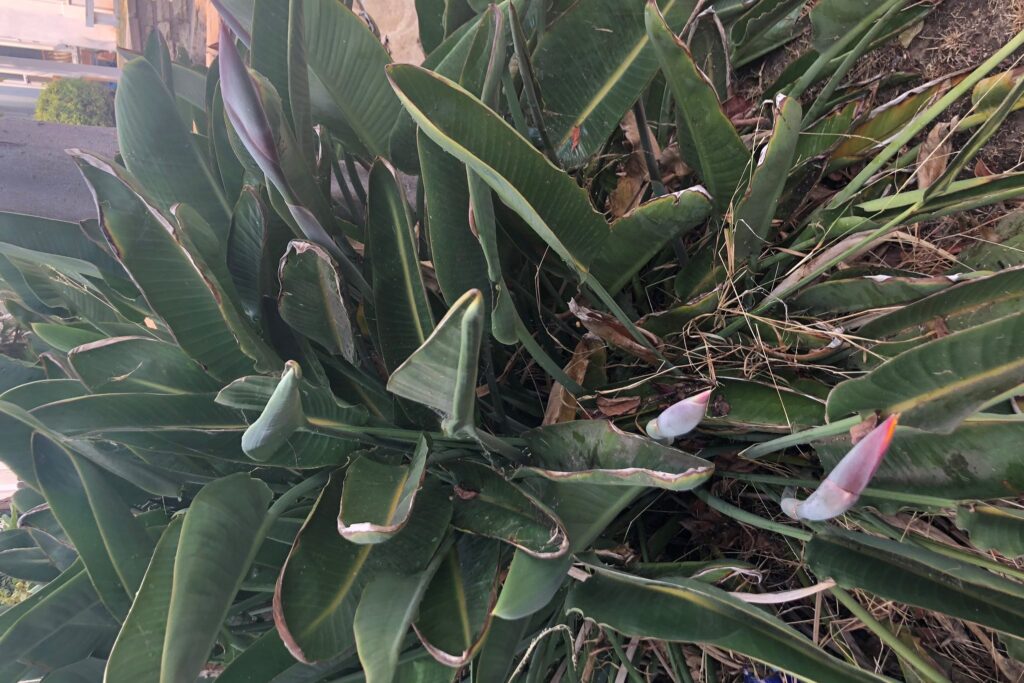White Bird Of Paradise Leaves Curling – White Bird of Paradise plants (Strelitzia nicolai) are known for their stunning foliage and majestic appearance. However, one common issue that many plant lovers encounter is the curling of the leaves. This phenomenon can be troubling, but understanding the underlying causes and solutions can help restore your plant’s health. In this article, we will explore the reasons why White Bird of Paradise leaves curl, how to identify the problem, and what steps you can take to ensure your plant thrives.
Understanding Leaf Curling in White Bird of Paradise
Leaf curling in White Bird of Paradise is often a response to environmental stressors or cultural practices. It’s crucial to identify the specific reason behind the curling to address it effectively. Below are the primary causes of leaf curling:
1. Insufficient Watering 💧
One of the most common reasons for curling leaves is insufficient watering. White Bird of Paradise prefers well-draining soil that retains some moisture. If the soil becomes too dry, the leaves may begin to curl to conserve water.
- Symptoms of Underwatering: Leaves will appear dry, and the soil will be hard and crumbly.
- Solution: Check the soil moisture regularly and water the plant thoroughly when the top inch of soil feels dry.
2. Overwatering 🚿

Conversely, overwatering can also lead to leaf curling. When the roots are sitting in waterlogged soil, they can become suffocated, leading to root rot and stress, which can manifest as curling leaves.
- Symptoms of Overwatering: Yellowing leaves, a foul smell from the soil, and soggy soil texture.
- Solution: Allow the topsoil to dry out between waterings. Ensure that the pot has adequate drainage.
3. Humidity Levels
White Bird of Paradise plants thrive in higher humidity levels, typically between 40-60%. When the air is too dry, particularly during winter months or in arid environments, leaves may start curling as the plant struggles to retain moisture.
- Symptoms of Low Humidity: Crispy leaf edges and curling leaves.
- Solution: Use a humidifier, or place a tray of water near the plant to increase humidity. Grouping plants can also help elevate humidity levels.
4. Temperature Stress, White Bird Of Paradise Leaves Curling

Temperature fluctuations can also cause stress, leading to curled leaves. White Bird of Paradise prefers temperatures between 65°F to 75°F (18°C to 24°C). Extreme temperatures, either too hot or too cold, can trigger leaf curling.
- Symptoms of Temperature Stress: Curling leaves along with browning tips.
- Solution: Maintain a stable temperature for your plant, away from drafts or heat sources.
5. Nutrient Deficiency
Nutrients are vital for healthy plant growth, and a lack of essential elements can lead to various symptoms, including leaf curling. Nitrogen, potassium, and magnesium deficiencies are particularly common in indoor plants.
- Symptoms of Nutrient Deficiency: Yellowing leaves and curling, especially at the tips.
- Solution: Feed your plant with a balanced fertilizer during the growing season, ensuring all necessary nutrients are provided.
6. Pests and Diseases
Insects and diseases can also impact your plant’s health. Pests like spider mites, aphids, and mealybugs can suck the sap from leaves, causing them to curl and deteriorate.
- Symptoms of Pest Infestation: Sticky residue on leaves, visible pests, or webbing.
- Solution: Inspect your plant regularly and treat any infestations with insecticidal soap or neem oil.
7. Transplant Shock
If you’ve recently repotted your White Bird of Paradise, you might notice curling leaves as the plant adjusts to its new environment. This process is known as transplant shock.
- Symptoms of Transplant Shock: Curling leaves and general drooping of the plant.
- Solution: Provide extra care during this period. Keep the plant in a stable environment and avoid fertilizing until new growth appears.
Preventing Leaf Curling in White Bird of Paradise: White Bird Of Paradise Leaves Curling
While it’s essential to address existing problems, prevention is the best strategy. Here are some proactive measures you can take to keep your White Bird of Paradise healthy and vibrant.
1. Monitor Watering Practices
Establish a consistent watering routine based on your plant’s needs. Use your finger to check soil moisture regularly and adjust accordingly. A moisture meter can be beneficial for precise readings.
2. Maintain Humidity Levels
If you live in a dry climate, consider placing a humidifier in the room or grouping plants together to maintain a more humid environment. Regularly misting the leaves can also help.
3. Optimal Temperature Control
Place your plant in a location that remains consistently warm, away from air conditioning vents or radiators. Aim for stable indoor temperatures to reduce stress.
4. Fertilization Schedule
During the growing season (spring and summer), feed your plant with a balanced, water-soluble fertilizer every 4-6 weeks. This will help ensure it receives the necessary nutrients for healthy growth.
5. Regular Inspection for Pests
Take the time to inspect your plant regularly for signs of pests. Early detection can help prevent infestations from getting out of control. Implement organic pest control methods when necessary.
Table of Common Issues and Solutions
| Issue | Symptoms | Solution |
|---|---|---|
| Underwatering | Dry, curling leaves | Water thoroughly when top inch of soil is dry |
| Overwatering | Yellowing leaves, soggy soil | Allow soil to dry out and improve drainage |
| Low Humidity | Crispy edges, curling | Use a humidifier or pebble tray |
| Temperature Stress | Curling leaves, browning tips | Maintain stable temperatures |
| Nutrient Deficiency | Yellowing and curling | Feed with balanced fertilizer |
| Pests/Diseases | Visible pests, sticky residue | Treat with insecticidal soap |
| Transplant Shock | Curling leaves, drooping | Ensure stable environment, avoid fertilizing |
Important Note: Always assess the overall health of your plant before taking action. Sometimes multiple issues can arise simultaneously.
Conclusion
Curling leaves in White Bird of Paradise can be frustrating, but by understanding the root causes and implementing preventative measures, you can help your plant thrive. Regular monitoring and care will ensure that your plant remains healthy and continues to be a stunning addition to your home. With attention and diligence, you can enjoy the beauty of your White Bird of Paradise for years to come. 🌱
